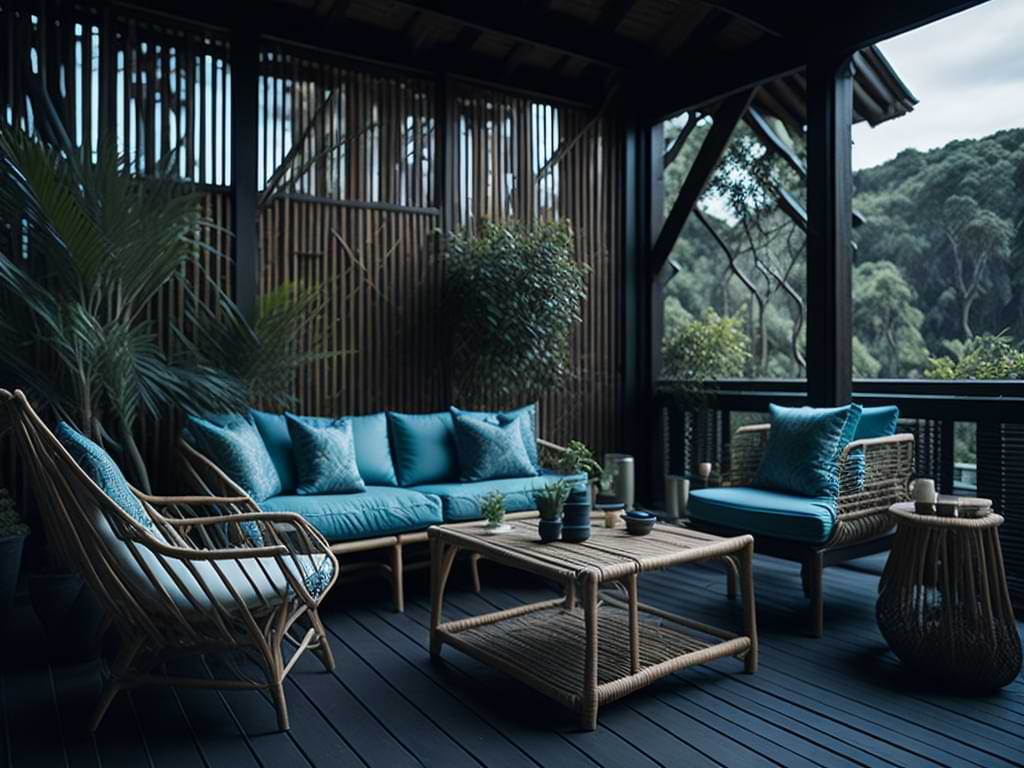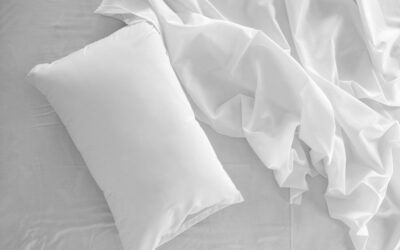Bamboo has been around for centuries and is considered one of the most versatile plants on earth. Its flexibility, strength, and sustainability make it a favorite material among designers and manufacturers alike.
Bamboo can be found in everything from furniture to accessories, making it an essential component of modern living.
As people become more conscious about the environment, they are turning towards bamboo as a sustainable alternative to traditional materials like wood or plastic. With its fast-growing properties and natural durability, bamboo is not only eco-friendly but also cost-effective.
Whether you’re looking for stylish furniture pieces for your home or trendy accessories to accentuate your wardrobe, there’s no denying that bamboo offers endless possibilities for innovation and creativity.
This article explores the versatility of bamboo and how it has evolved into a go-to material for both functional and fashionable items in today’s world.
A Brief History Of Bamboo
Bamboo – the giant grass that grows tall and strong, swaying in the breeze. Just like a person’s character, bamboo is flexible yet resilient.
Its history dates back to ancient times when it was used for various purposes such as building homes, weapons, and even paper. The cultural significance of bamboo can be seen in many parts of Asia, where it symbolizes strength and purity.
In China, bamboo has been used since the Zhou dynasty (1046-256 BCE) for construction purposes due to its tensile strength and durability. It was also utilized as a writing material during this period because of its smooth texture.
In Japan, bamboo was an essential component in tea ceremonies because of its natural beauty and simplicity. The use of bamboo as a musical instrument can be traced back to Vietnam’s Dong Son culture (700 BC).
The versatility of bamboo is not limited to just practical uses; it also holds spiritual importance. In Hinduism and Buddhism, bamboo represents humility and modesty due to its ability to bend without breaking. Additionally, some tribes in South Africa believe that their ancestors’ spirits dwell within the hollow nodes of certain types of bamboo.
Truly remarkable how one plant species can hold so much cultural value throughout different parts of the world!

The Sustainability Of Bamboo
Bamboo is not only versatile but also sustainable. Bamboo farming requires less water and pesticides compared to other crops because it has natural antimicrobial properties that protect against pests and diseases. Furthermore, bamboo can grow up to three feet per day without replanting since its roots remain intact after harvesting.
Despite being a fast-growing crop with sustainable farming practices, bamboo production still poses environmental concerns. The processing of bamboo involves chemicals that may harm the environment if not disposed of properly. Additionally, transportation emissions from importing bamboo products from overseas can contribute to carbon footprints.
To address these issues, some companies are investing in eco-friendly production methods such as using organic treatments during processing or sourcing locally grown bamboo to reduce transportation emissions.
Consumers can also make a difference by choosing products made from sustainably sourced bamboo and disposing of them responsibly at their end-of-life stage.
Bamboo’s sustainability lies not only in its growth rate but also in how it is farmed and processed. By supporting mindful consumption habits and responsible production practices, we can ensure that bamboo continues to be an environmentally friendly alternative for furniture and accessories while reducing our impact on the planet.
The Durability Of Bamboo
Bamboo’s resistance to wear and tear is one of its most impressive qualities.
This material can withstand a great deal of pressure and still remain intact, making it an ideal choice for furniture, flooring, and other accessories that are subjected to constant use.
In fact, bamboo has been found to be stronger than steel in terms of tensile strength.
It is also more flexible than many types of hardwoods, which means that bamboo products are less likely to crack or break under stress.
When compared to traditional materials such as plastic or metal, bamboo stands out for its natural durability and resilience.
Overall, the durability of bamboo makes it an excellent investment for anyone looking for long-lasting, sustainable options.
Whether you’re seeking environmentally-friendly furniture or simply want something that will stand up to daily wear and tear, bamboo offers unparalleled quality and value.
So why settle for inferior materials when you can choose bamboo?
Bamboo Furniture: Style And Functionality
Bamboo furniture is a design trend that has gained immense popularity in recent times. The natural beauty and durability of bamboo make it an excellent choice for furniture pieces, be it indoor or outdoor.
Unlike traditional wood-based furniture, bamboo furniture offers a unique aesthetic appeal that adds character to any living space.
When it comes to customization options, bamboo furniture does not disappoint either. Manufacturers offer various styles and designs ranging from classic to modern, allowing customers to choose what best fits their style preferences.
Furthermore, the lightweight nature of bamboo makes it easy to move around, making redecorating effortless.
Apart from its visual appeal and functionality, purchasing bamboo furniture also means contributing towards environmental sustainability. Bamboo grows faster than trees and requires less water and fertilizer, making it an eco-friendly alternative over other materials commonly used in furniture production.
So if you’re looking for stylish yet sustainable options for your home décor needs, bamboo furniture may just be the answer!

Bamboo Accessories: Fashion And Eco-Friendliness
Ready to take your love for bamboo a step further? If so, then you’ll be thrilled to know that the eco-friendly material is now making waves in the fashion industry.
From earrings to necklaces, bracelets to bangles – there’s no shortage of bamboo jewellery available on the market today. In addition to being stylish and unique, bamboo accessories are also incredibly sustainable.
Unlike metal or plastic options, which can have negative impacts on both people and the environment during production, bamboo is renewable and biodegradable. So not only will you look good while wearing it, but you’ll also feel good about supporting an ethical product.
But don’t limit yourself to just jewellery! Bamboo home decor items like photo frames, vases, and wall art are all popular choices for those looking to add some natural flair to their homes. With its durability and versatility, it’s clear that this plant has much more potential beyond just furniture-making.
Get creative with how you incorporate bamboo into your life – the possibilities are endless!
Innovations In Bamboo Design
Bamboo has been used as a building material for centuries, but its applications have expanded beyond traditional furniture and accessories.
As the world becomes more environmentally conscious, bamboo is increasingly being recognized for its potential in technology design. Its strength, flexibility, and light weight make it ideal for use in electronics such as smartphones and laptops.
But it’s not just technology that benefits from bamboo’s unique properties. Artists and sculptors are discovering new ways to incorporate this versatile material into their work. The natural beauty of bamboo lends itself well to creating intricate designs, whether in sculpture or home decor.
From large-scale installations to delicate jewellery pieces, there seems to be no limit to what can be created with bamboo.
As we continue to explore the possibilities of this remarkable plant, it’s clear that bamboo will play an important role in shaping our future. Whether through innovative technological advancements or stunning artistic creations, it’s exciting to think about all the ways we’ll see bamboo used in the years ahead.
The Future Of Bamboo In Design And Manufacturing
Remember when bamboo was just a material used for making baskets and chopsticks? Those times are long gone. Now, this versatile plant has become the go-to choice for designers who want to create sustainable products that not only look great but also have a positive impact on the environment.
Bamboo’s potential is enormous, especially in terms of its ability to reduce carbon emissions. Unlike other materials like plastic or metal, it doesn’t release harmful gases into the atmosphere during production or disposal. Plus, bamboo can absorb up to five times more CO2 than other plants, which makes it an effective tool in combating climate change.
As more companies recognize these benefits, we can expect to see an increase in demand for bamboo-based products. This trend will undoubtedly have a significant impact on the economy as well. Bamboo cultivation creates job opportunities and stimulates economic growth in rural areas where traditional agriculture may no longer be profitable.
In short, the future looks bright for bamboo – both from a design perspective and an environmental one.
Conclusion
In conclusion, the versatility of bamboo is truly remarkable.
Its history dates back centuries and its sustainability and durability make it an ideal material for furniture and accessories.
I have personally incorporated bamboo products into my home décor and wardrobe, not only for their style but also because of their eco-friendliness.
As we continue to prioritize sustainable living, innovations in bamboo design will surely increase.
It excites me to think about the possibilities that lie ahead for this incredible material.
Let’s embrace the coincidences that bring us closer to a more conscious way of living and appreciate all that bamboo has to offer in our daily lives.





0 Comments